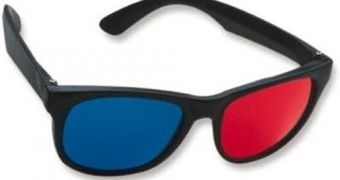Apple has been granted a U.S. patent for three-dimensional display system which, in theory, would allow multiple viewers to see a high-quality 3D image without the special glasses. Viewers would not have to sit in pre-determined positions either, making the 3D experience proposed by Apple extremely enticing.
Since most 3D displays today require that viewers wear special glasses, they’re not what the industry would call a “popular” product, although there is demand for a 3D viewing experience.
Because users generally dislike wearing equipment over their eyes, Apple believes that displaying a 3D image to a group of people requires a better approach.
“The present invention relates generally to visual display systems, and more particularly to a three-dimensional display system,” the patent is described.
“A three-dimensional display system provides a projection screen having a predetermined angularly-responsive reflective surface function,” the abstract of the invention reads.
“Three-dimensional images are respectively modulated in coordination with the predetermined angularly-responsive reflective surface function to define a programmable mirror with a programmable deflection angle.”
Apple then goes into detail, describing a method of displaying three-dimensional images, comprising:
"- providing a projection screen having a spatial filter defining a predetermined angularly-responsive reflective surface function;
- determining the left and right eye locations of at least one observer in proximity with the projection screen;
- projecting left and right sub-images of a three-dimensional image toward the projection screen;
- and angularly and intensity modulating the left and right sub-images respectively in coordination with the predetermined angularly-responsive reflective surface function to define respective discrete light paths that respectively direct the left and right sub-images to reflect from the projection screen to the respective left and right eye locations to provide a three-dimensional viewing experience.”
Basically, Apple is talking about a reflective screen with a rippled texture in what would become an autostereoscopic projection system.
To project images to each eye without the need of special equipment (glasses), the system would track the viewer's eyes and calculate their position in space, then project each pixel of the stereoscopic images to a precise spot on one of the screen's ripples, reflecting it into one or other of the viewer's eyes.
Apple believes that if this can be done for one pair of eyes, multiple images projected onto different points on the ripples will achieve the same results for multiple users.

 14 DAY TRIAL //
14 DAY TRIAL //